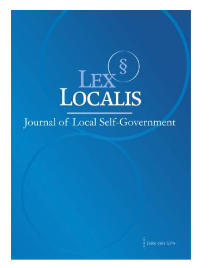Analysis of the Influence of Economic, Social, and Demographic Factors on Narcotics Trafficking Crime in Riau Province Using a Spatial Approach
DOI:
https://doi.org/10.52152/Ključne besede:
Spatial Econometrics, Narcotics Crime, Socioeconomic Factors, Unemployment, Education, Spatial Spillover, Regional Inequality, Riau Province, Panel Data, Spatial Lag ModelPovzetek
This study examines the spatial determinants of narcotics crime across 12 districts and cities in Riau Province, Indonesia, by integrating socio-economic and demographic factors into a spatial econometric framework. The increase in narcotics-related offenses, along with regional disparities in economic conditions and law enforcement capacity, highlights the need to explore how local characteristics and spatial interdependencies contribute to crime distribution. Using panel data from 2014 to 2023 and applying the Spatial Lag of X (SLX) model with random effects, this study investigates the direct and spillover effects of unemployment, poverty, income inequality, education level, economic growth, and youth male population on narcotics crime rates. The results reveal that unemployment has a significant positive effect on narcotics crime, indicating that individuals in economically vulnerable areas are more likely to engage in illegal activities. Education level shows a strong spatial spillover effect, suggesting that improvements in educational attainment in one district can reduce crime in neighboring regions. Interestingly, poverty is negatively associated with narcotics crime, possibly due to limited market viability and enforcement presence in extremely poor areas. Income inequality and male youth population were not statistically significant, although they remain theoretically relevant. The presence of strong spatial autocorrelation, confirmed through Moran’s I and Lagrange Multiplier tests, validates the use of spatial panel regression models. This research contributes to spatial criminology in Indonesia by highlighting the regional interconnectedness of socio-economic factors and narcotics crime. It suggests that anti-narcotics policies must be coordinated at the provincial level, integrating employment programs, education reform, and inter-district cooperation. The study recommends future research to incorporate institutional quality, law enforcement capacity, and micro-level spatial data for more nuanced policy formulation.
Prenosi
Objavljeno
Številka
Rubrika
Licenca
Avtorske pravice (c) 2025 Lex localis - Journal of Local Self-Government

To delo je licencirano pod Creative Commons Priznanje avtorstva-Nekomercialno-Brez predelav 4.0 mednarodno licenco.







